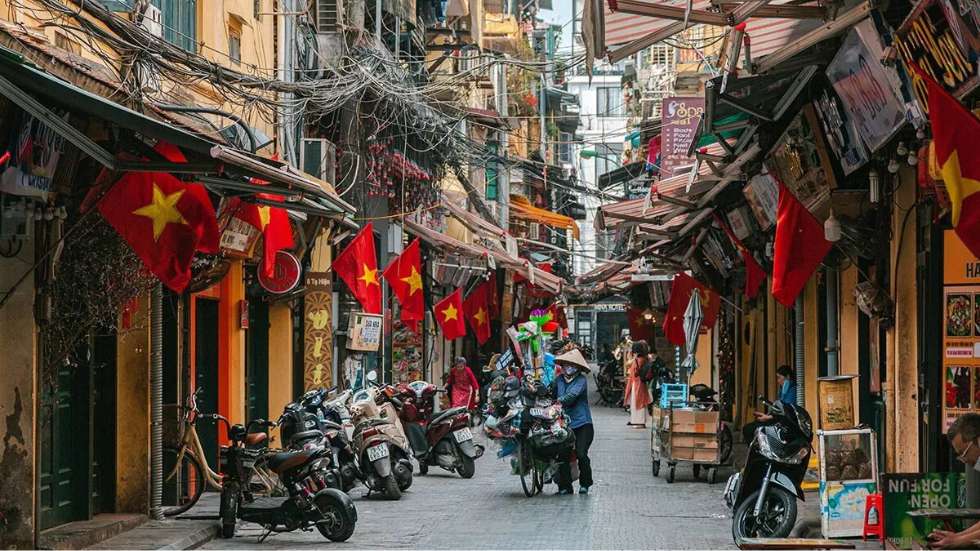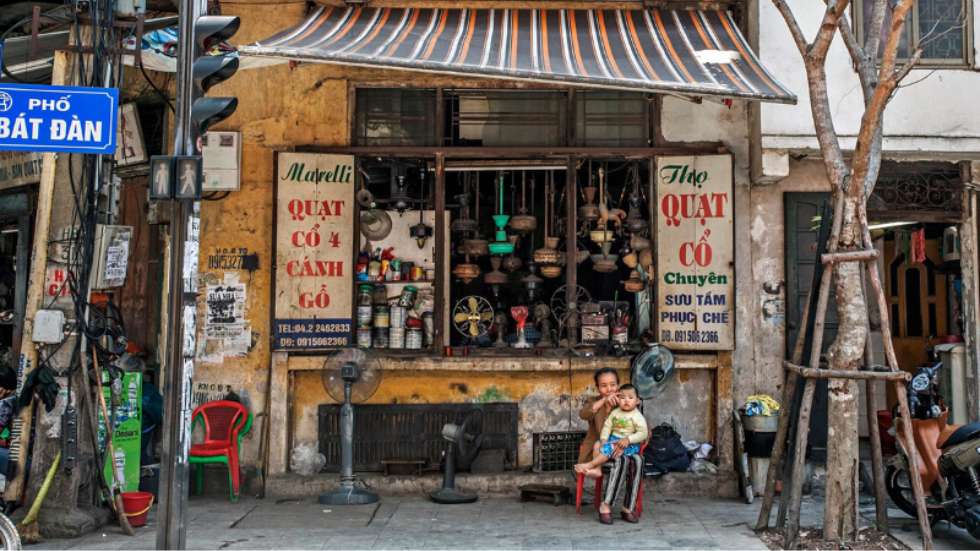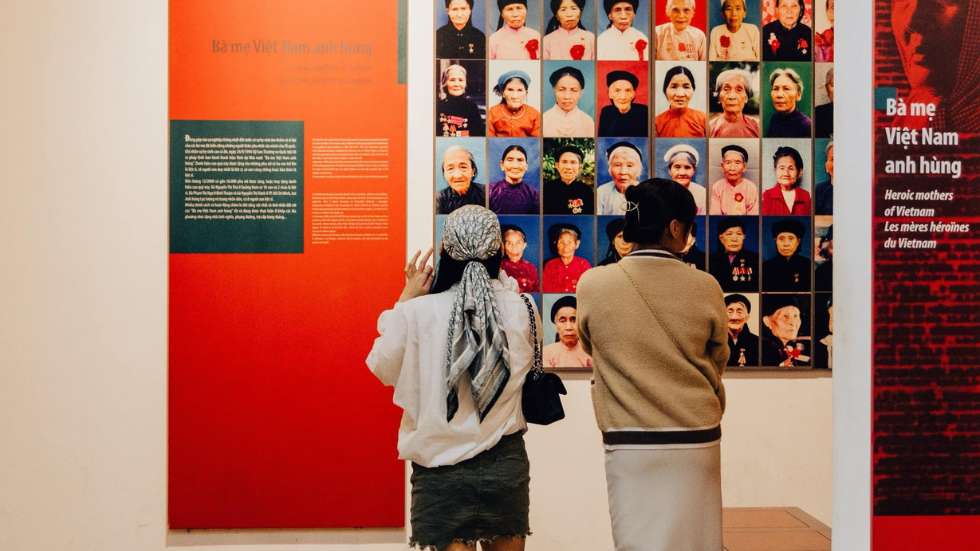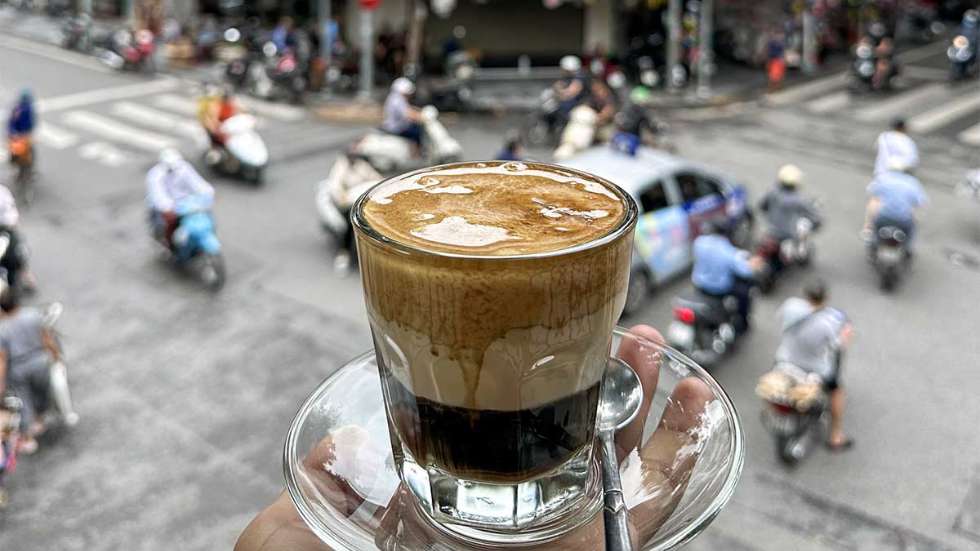LOGIN - TOURISM PROFESSIONALS
Trusted & professional DMC & Tour Operator in Vietnam
WITH A PROFESSIONAL ACCESS, YOU WILL HAVE ACCESS TO:
- Our complete production (tours, excursions and personalized modules).
- Our Toolbox (unique documents about each of our destinations that will help you in providing detailed information to your clients).
- Our highlights, recommendations, newsletters and many other practical contents.
Hanoi Old Quarter – A Living Mosaic of History and Modernity
Welcome to Hanoi Old Quarter, the beating heart of Vietnam’s capital. In this guide, we invite you to explore one of the most captivating parts of Hanoi—a vibrant neighborhood where ancient history and modern life blend harmoniously. Whether you're a first-time visitor or a local rediscovering familiar streets, the Old Quarter offers a warm welcome with its narrow alleys, lively markets, and timeless architecture. Discover Hanoi Old Quarter: A Journey Through History and Architecture, as we introduce you to its rich past, unique design, and the everyday life that makes this place so special.

Source: Internet
Overview of A Living Mosaic of History and Modernity
The Old Quarter is like a living museum where every street corner tells a story. Over the centuries, this area has transformed from a small trading village along the Red River into a bustling urban center filled with cultural and historical treasures. Its evolution reflects not only centuries of change—from ancient dynasties and colonial influences to modern developments—but also the enduring spirit of its people.
The Origins and Growth of the Old Quarter
The roots of the Old Quarter reach deep into Hanoi’s past. It began as a humble market town, where early settlers traded goods along the Red River. Over time, as more people arrived, the area expanded and became the center of commerce and daily life. The influence of various dynasties and later the French colonial period helped shape the unique character of the Old Quarter. This evolution is evident in its narrow lanes and vibrant street scenes, which continue to thrive today.
Key Historical Events and Landmarks
Throughout its long history, the Old Quarter has been witness to many important events. Historic markets like Dong Xuan and religious sites such as ancient temples have marked the passage of time. Landmarks built during different eras stand as silent reminders of the neighborhood’s vibrant past. We encourage you to take a moment on your visit to look at these sites and imagine the countless stories they hold.
Architectural Characteristics and Social Impact of Hanoi Old Quarter
The Signature Tall and Narrow Houses
One of the most eye-catching features of the Old Quarter is its traditional "tube houses." These tall, narrow buildings were designed to make the most of limited space in a crowded city. Typically, they have a small front facing the busy street where shops or offices were once located, and a long, private living space hidden behind. We find these clever designs both practical and charming—they show how ingenuity and culture can turn constraints into beauty.
Unique Urban Layout and Street Design
The Old Quarter’s layout is as fascinating as its buildings. Narrow lanes and winding streets create an intimate atmosphere where neighbors know each other well. This design encourages social interaction, spontaneous conversations, and community gatherings, which add to the unique urban experience. Every twist and turn invites exploration, offering a sense of discovery that modern cities often lack.
The Role of the Old Quarter in Hanoi’s Identity
Hanoi Old Quarter is more than just a collection of buildings; it’s the soul of the city. The blend of history and daily life here shapes local culture and instills a strong sense of identity among its residents. Traditional customs, vibrant festivals, and everyday routines are all part of the fabric of the Old Quarter. We see this neighborhood as a living testament to Hanoi’s rich heritage, where the past and present coexist in a way that makes every visit memorable.
Daily Life and the Urban Experience
In the Old Quarter, history comes alive through daily life. Picture busy marketplaces where vendors sell fresh produce, aromatic street food, and handmade crafts. Think of cozy cafés where locals gather for strong Vietnamese coffee, or small, bustling alleys where traditions are passed down through generations. These everyday scenes provide visitors with an authentic taste of Hanoi—its energy, warmth, and vibrant community spirit.

Source: Internet
Must-Visit Attractions in the Hanoi Old Quarter
The Old Quarter is bursting with must-see spots that capture the true essence of Hanoi. Here’s a deeper look at some of the highlights you should explore:
Historic Markets and Temples
Dong Xuan Market: One of Hanoi’s largest and oldest markets, Dong Xuan is a treasure trove of local produce, textiles, and handicrafts. Its bustling energy provides a real taste of local commerce and daily life.
Bach Ma Temple: This ancient temple, rich in legend and spiritual heritage, offers a quiet retreat amidst the lively streets. Its intricate architecture and peaceful surroundings provide a stark contrast to the urban hustle.
St. Joseph’s Cathedral: A beautiful example of colonial architecture, this neo-Gothic church stands as a cultural landmark and offers a glimpse into the diverse history of the Old Quarter.
Traditional Craft Streets and Hidden Gems
Hang Gai (Silk Street): Famous for its silk products and tailored clothing, this street is ideal for shopping and picking up unique souvenirs. Local artisans still practice their craft here, ensuring quality and tradition go hand in hand.
Hang Bac (Silver Street): Known for its silver jewelry and handicrafts, Hang Bac is a wonderful place to see traditional Vietnamese craftsmanship at work.
Hidden Courtyards and Narrow Alleys: Wander off the main streets to discover tucked-away courtyards, small art galleries, and cozy cafés. These hidden gems offer a more intimate glimpse into the daily lives of Hanoians and are perfect for photography and quiet reflection.
Unique Landmarks and Museums
Ô Quan Chưởng Gate: One of the few remaining gates from old Hanoi, this historical structure marks the boundary of the ancient city and offers a symbolic entrance to the Old Quarter.
Local Museums: There are several museums scattered throughout the Old Quarter. Must-visits are Hoa Lo Prison Museum, Vietnam National Fine Arts Museum, and Vietnam National Museum of History. They house artifacts, photographs, and stories that give visitors a deeper understanding of Hanoi’s evolution.

Source: Internet
Cultural Rituals and Community Spots
Street Food Corners: The Old Quarter is renowned for its culinary delights. From mouthwatering banh mi to steaming bowls of pho, the street food here is an essential part of the cultural experience.
Cafés and Tea Houses: Traditional coffee shops, many of which have been around for decades, offer a relaxed setting where you can watch the world go by while enjoying a cup of strong Vietnamese coffee.
Local Festivals and Performances: Depending on when you visit, you might catch street performances, traditional music, or festive events that bring the history and culture of the Old Quarter to life.
You should take your time and explore these spots at your own pace. Whether you’re interested in shopping for local crafts, tasting authentic Vietnamese cuisine, or simply soaking in the historical ambiance, the Old Quarter has something special for everyone.
Visitor’s Tips and Recommendations
Tips for Navigating the Narrow Streets
Exploring the Old Quarter is an adventure in itself. Since the streets are narrow and bustling, we recommend taking your time and enjoying a leisurely walk. Early mornings or late afternoons are perfect for avoiding the biggest crowds. You might also consider renting a bicycle or using a local taxi if you prefer a quicker pace. Remember, the narrow alleys are part of the charm, so don’t rush—each turn offers something new and interesting.
Best Times to Visit Hanoi Old Quarter
For a more relaxed experience, visit on weekdays when the area is less crowded. Early mornings give you a peaceful start to your day, while evenings bring a vibrant atmosphere with street performances and local food stalls. We suggest planning your visit to match your pace and interests, whether you’re in the mood for quiet reflection or lively exploration.
Combining Your Visit with Local Experiences
The Old Quarter isn’t just about sightseeing; it’s about experiencing life as a Hanoian. After exploring the historic streets, stop by a local café to enjoy a cup of Vietnamese coffee, or sample delicious street food like banh mi and pho. Many guided tours also offer cultural insights and hands-on experiences with local crafts. We recommend combining your visit with a cultural tour that lets you see, taste, and feel the true essence of Hanoi.

Source: Internet
Conclusion
Hanoi Old Quarter is a vibrant blend of history and modern life—a place where ancient narrow lanes and traditional tube houses tell stories of generations past while the buzz of everyday life keeps the culture alive. We hope our guide has given you a warm introduction to this fascinating neighborhood, inspiring you to explore its rich history, unique architecture, and dynamic community. So take a leisurely stroll, interact with friendly locals, and discover the hidden treasures that make the Old Quarter a true living mosaic of Hanoi’s heritage.
.jpg)
.jpg)
.jpg)
.jpg)
.jpg)
.jpg)
.jpg)
.jpg)
.png)
.jpg)
.jpg)
.jpg)
.jpg)
.jpg)
.jpg)
.jpg)
.jpg)
.png)
.jpg)